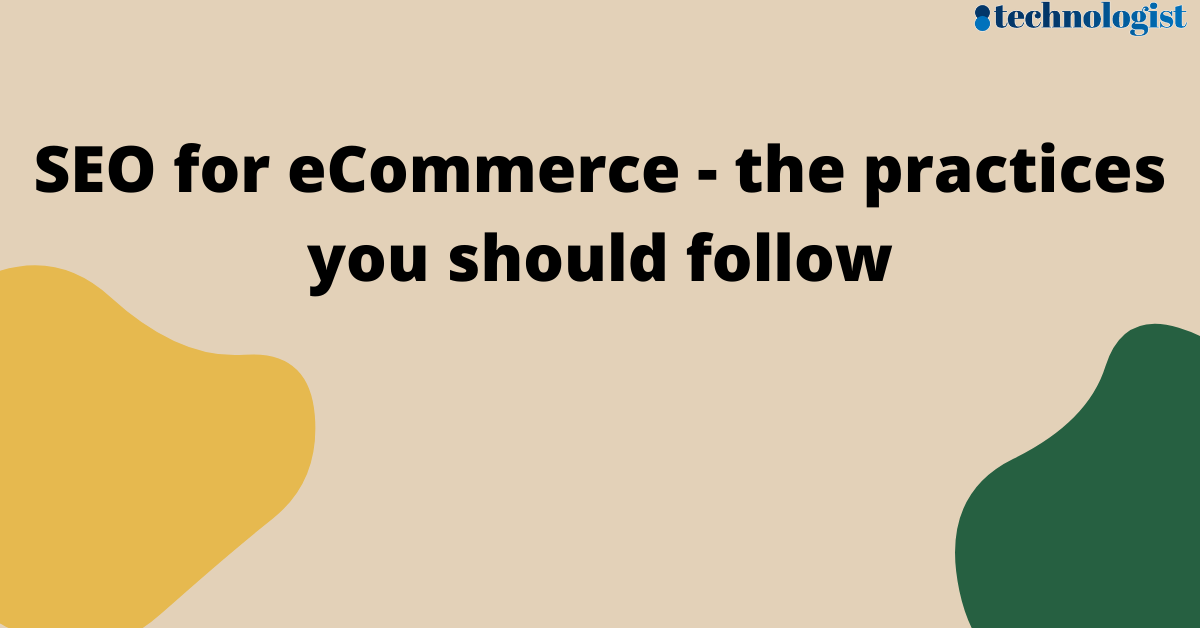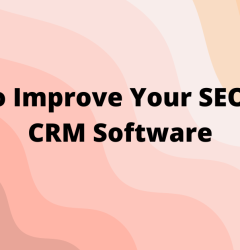24 Oct

SEO for eCommerce – the practices you should follow

All websites benefit from the visibility that comes with a high ranking in Google search results. But when your entire business is online, it suddenly becomes even more important that potential customers can easily find you. To achieve that, you’ll want to invest in SEO. However, regular SEO may not be enough – if you want your online store to rank higher, you’ll need SEO for eCommerce specifically. So what are the best practices for optimizing your eCommerce website?
How is SEO for eCommerce different from other types of SEO?
Search engine optimization can take many different forms. No two SEO strategies are exactly alike. How often you publish optimized content, which internal links you prioritize, whether you sacrifice speed for visual content or opt for minimalistic design to increase loading speeds – it all depends on the type of website you’re running. So if you’re aiming to increase your earnings with eCommerce, you’ll need to develop a strategy for that goal specifically. This can be tricky because you need to optimize two very different types of content: landing pages or blogs and product pages. You want both types to show up in Google searches (albeit for different searches). But product pages rely heavily on images, reviews, and very little text, whereas landing pages and blogs are the exact opposite. Your challenge will be to improve both.

Best practices for SEO for eCommerce
When you’re developing a strategy for eCommerce SEO, there are a number of things you need to keep in mind. Your biggest focus should be to:
Use the right keywords
Keyword research is a necessary part of SEO. Targeting the wrong keywords is one of the biggest mistakes you can make in SEO and can make it much more difficult for you to succeed. So it’s important to choose which specific searches your website and each of its pages should rank for. Think about who you want to reach and why. Not only do your keywords need to reflect your business, but they also need to be actual search terms used by your target demographic; longer and more specific keywords that people search for with the intention of making a purchase are great for product pages while more general ones can work for landing pages and blogs.
Don’t forget about alt tags and meta descriptions
An eCommerce website typically has hundreds of pictures. But while search engines will register an image, they can’t actually see what’s on it. A short alt tag will help them display the photos in relation to the right searches. It also has the benefit of making your website more accessible for your users. Just like images, meta descriptions for product pages will improve their ranking as well as make your website more attractive in search results. Add keywords to alt texts and meta descriptions to make the best use of them.

Keep the navigation simple
If you’re running an eCommerce website, you will inevitably end up with many pages because you need at least one for each product you’re selling. This can make it hard for users to locate what they’re looking for, negatively impacting their experience on your website. But you need those pages, so there’s nothing you can do, right? This attitude leads to one of the biggest eCommerce mistakes – not organizing your store in a way that is easy to navigate. So divide your products into categories to make them easier to find. Include a filtering option so your users can customize their browsing. Finally, make sure your search function is superb for those users who are looking for something specific.
Work on your loading speed
Having a lot of pages and a lot of images can both make your website very slow. And slow-loading pages are the death of any website. So you’ll want to address this issue with a good hosting service, caching, technical optimization, and lazy loading (to begin with). The pages that you especially want to focus on are at the checkout stage. An overly slow and complicated checkout process often leads to high rates of shopping cart abandonment. To encourage shoppers to complete the purchase, make the checkout easy for them – lower the number of pages they need to go through and remove any unnecessary elements from them to speed them up. You’ll also want to periodically check that the checkout pages are functioning properly to avoid any issues.
Encourage reviews
Most consumers read reviews before buying any product. So reviews are good for you. You want as many of them as you can get. They provide social proof and are a testament to the quality of your products. But that’s not all – they’re also good for SEO. People will unwittingly use important keywords, your brand name, and product names, all of which contribute to the visibility of your website in Google searches. Better yet, you can use reviews to create rich snippets. This will make your website stand out from others in search results.

Optimize for shoppers, not for search engines
Making it easy for Google bots to find, crawl, and understand your website is important. But as much as shopping has changed thanks to the internet, robots are still not capable of making any purchases. So your ultimate goal has to be converting consumers. For that reason, your website needs to be optimized for people. Don’t stuff keywords in your product names and descriptions, create disorganized pages just to have more content, or sacrifice good visual product representation for speed. At the end of the day, ranking high won’t matter if no one is actually buying your products. So make your website appealing to users, first and foremost. Additionally, implementing effective SaaS funding link building strategies can further enhance your website’s visibility and traffic, contributing to a holistic online presence.
The importance of SEO for eCommerce
Whether your entire business is online or you just have an online store, selling your products through a webstore can significantly improve your profits. But competition in the eCommerce world is fierce. You’ll need to stand out for all the right reasons if you want to succeed. SEO for eCommerce helps you do just that. It makes your store easier to find for potential shoppers, and it also improves their experience on the website itself. This can, in turn, help you sell more. But to truly achieve the best results, you should follow up your SEO strategy with CRO – conversion rate optimization.
About the author
Linda Fogel is a part-time blogger and full-time developer. She often writes articles on web development and design, SEO, and PPC. In her spare time, Linda enjoys catching up on the latest digital marketing trends and going to the movies.




















Find Us On